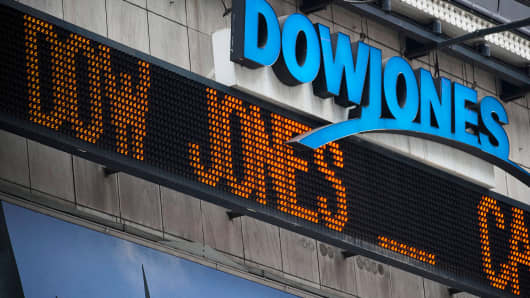Thank goodness Dow Jones only changes the Dow Industrial Average every few years because it spares all of us stock reporters the problem of explaining why it makes the changes.
But it's not hard to understand. Two things you need to know:
First, the Dow Jones Industrial Average is not an industrial average. Yes, in the early days, it was because most stocks were industrial at a time when the economy was moving from agricultural to an industrial base. But that has long since ceased to be true.
Dow Jones says the Dow is meant to represent the large-cap sector of the market. That's it.
So they need to keep up with the times. If there is more weighting in, say, the retail sector, than it needs to reflect that.
Second, making changes in the index is not a judgment on the viability of one component over another. Dow Jones is NOT saying, for example, that Goldman Sachs is a better company than Bank of America. It is not providing investment advice nor a recommendation to buy anything.
So what's behind these specific moves today? Two points:
First: index construction. The Dow is price weighted. The three stocks taken out of the index are the three lowest-priced stocks in the index. You do not want really low-priced stocks because they do not have any influence on a price-weighted index! That puts more pressure on all the other stocks to represent the big-cap sector of the market.
The average price for a stock in the Dow Industrials is $65. Alcoa is $8. Get it?
By the way, the opposite is also true: you don't want really high-priced stocks in the Dow either. That's why Apple ($503) and Google ($888) are not in the index.
Second: sector diversification. Like I said, they need to keep up with the times. Nike represents the growing consumer sector. Visa is a payments technology company that better represents technology than Hewlett-Packard, which is in a more narrow area of PCs, printers, and servers.
While this is not far from the kind of services Bank of America provides, remember that Bank of America is $14. Goldman is $164. In this case, this is practically a like-for-like substitution with a rationale based mostly on price.










